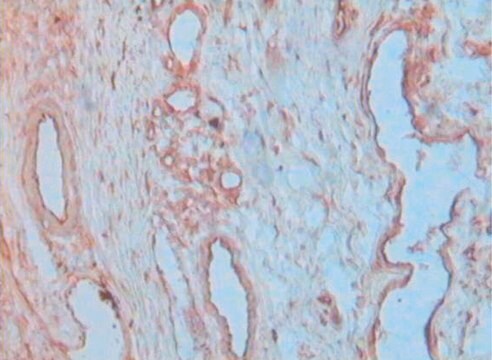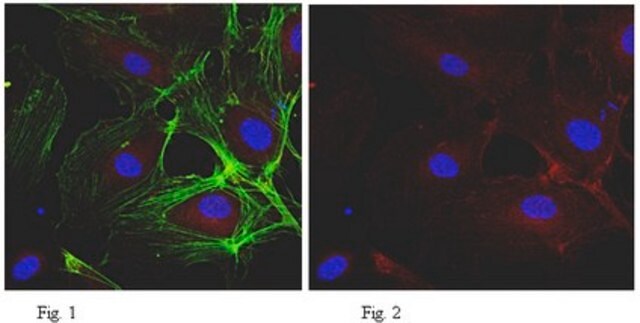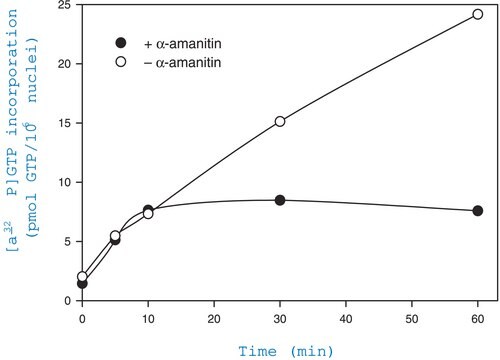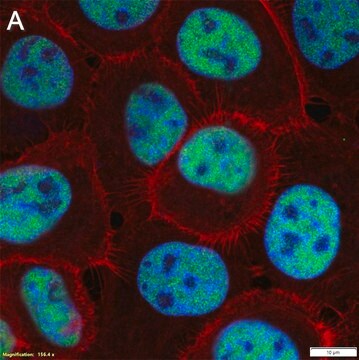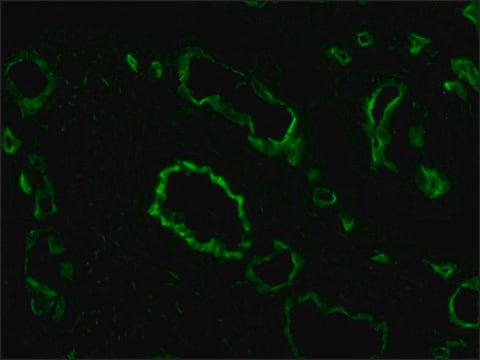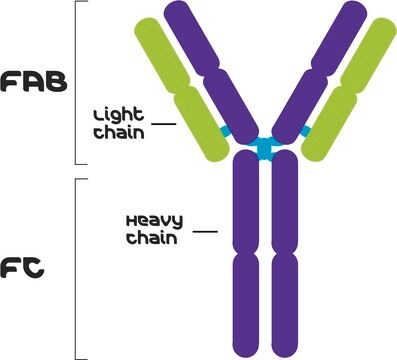MABT134
Anti-VE-cadherin Antibody, clone BV6
clone BV6, from mouse
Synonym(e):
Cadherin-5, 7B4 Antigen
About This Item
Empfohlene Produkte
Biologische Quelle
mouse
Qualitätsniveau
Antikörperform
purified immunoglobulin
Antikörper-Produkttyp
primary antibodies
Klon
BV6, monoclonal
Speziesreaktivität
human
Methode(n)
flow cytometry: suitable
immunocytochemistry: suitable
immunohistochemistry: suitable (paraffin)
western blot: suitable
Isotyp
IgG2aκ
NCBI-Hinterlegungsnummer
UniProt-Hinterlegungsnummer
Versandbedingung
wet ice
Posttranslationale Modifikation Target
unmodified
Angaben zum Gen
human ... CDH5(1003)
Allgemeine Beschreibung
Immunogen
Anwendung
Zellstruktur
Adhäsions-Proteine (CAMs – Zelladhäsionsmoleküle)
Immunohistochemistry Analysis: A 1:10-1:20 dilution of a representative lot was used by an independent laboratory in paraffin-embedded tissue sections. Buffered formalin fixation is recommended with a fixation period of no longer than 12 hours. High heat antigen retrieval in citrate buffer (Cat. No. 21545) is also suggested. Antibody can also be used to label acetone-fixed cryostat sections or cells using a immunoperoxidase staining protocol (eg. IHC Select Detection Kit, Cat. No. DAB150)
Flow Cytometry Analysis: A representative lot was used in the presence of Ca2+. Note: Use PBS + 2-5mM EDTA for cell detachment.
Western Blot Analysis: Non-reducing conditions may be needed, Ca2+ required in buffer (2-5 mM).
Qualität
Western Blot Anlaysis: A 1:2,000 dilution of this antibody detected VE-cadherin in HUVEC cell lysate.
Zielbeschreibung
The calculated molecular weight is 82 kDa but it will run between ~90-140 kDa because this protein is glycosolated.
Verlinkung
Physikalische Form
Lagerung und Haltbarkeit
Hinweis zur Analyse
HUVEC cell lysate
Sonstige Hinweise
Haftungsausschluss
Sie haben nicht das passende Produkt gefunden?
Probieren Sie unser Produkt-Auswahlhilfe. aus.
Empfehlung
Lagerklassenschlüssel
12 - Non Combustible Liquids
WGK
WGK 1
Flammpunkt (°F)
Not applicable
Flammpunkt (°C)
Not applicable
Analysenzertifikate (COA)
Suchen Sie nach Analysenzertifikate (COA), indem Sie die Lot-/Chargennummer des Produkts eingeben. Lot- und Chargennummern sind auf dem Produktetikett hinter den Wörtern ‘Lot’ oder ‘Batch’ (Lot oder Charge) zu finden.
Besitzen Sie dieses Produkt bereits?
In der Dokumentenbibliothek finden Sie die Dokumentation zu den Produkten, die Sie kürzlich erworben haben.
Unser Team von Wissenschaftlern verfügt über Erfahrung in allen Forschungsbereichen einschließlich Life Science, Materialwissenschaften, chemischer Synthese, Chromatographie, Analytik und vielen mehr..
Setzen Sie sich mit dem technischen Dienst in Verbindung.